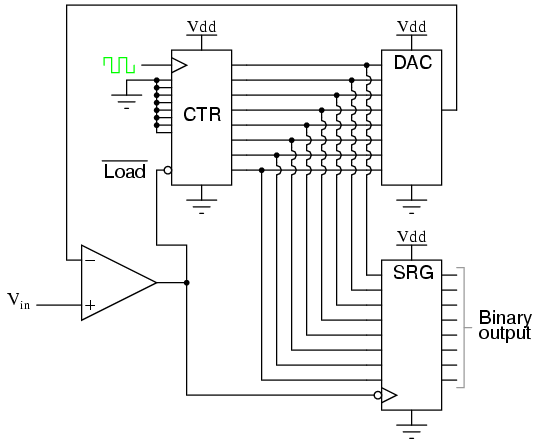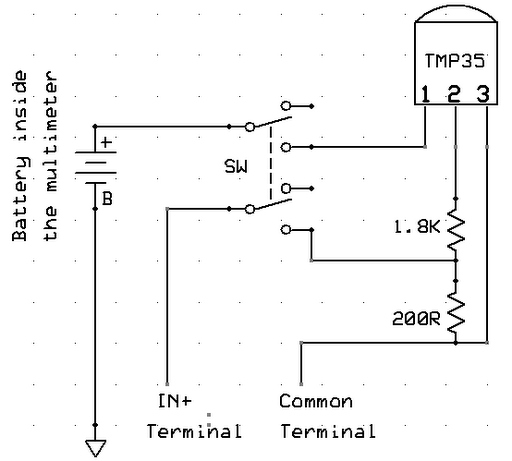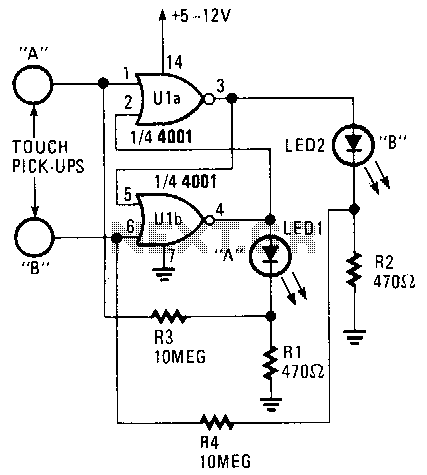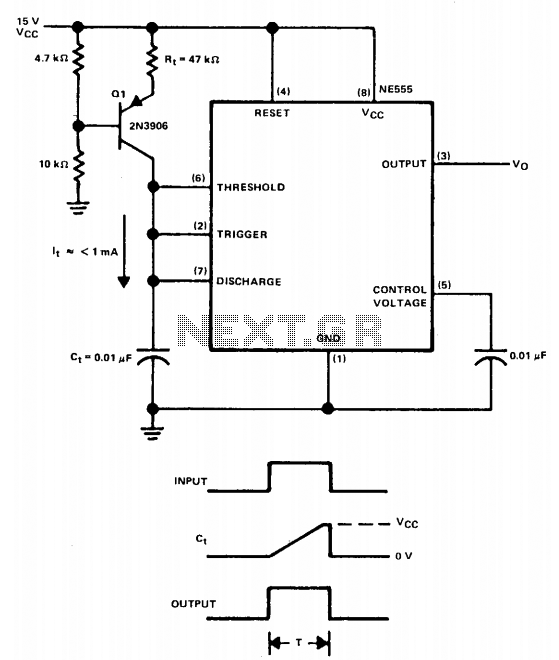
Digital Ramp ADC

Also known as the stairstep-ramp or simply counter A/D converter, this type of converter is relatively straightforward to comprehend but unfortunately has several limitations.
The stairstep-ramp or counter A/D converter operates on the principle of comparing an analog input voltage to a series of discrete voltage levels generated by a digital counter. The output of the converter is a digital representation of the analog input, which is achieved through a stepwise approximation method.
In its operation, the counter A/D converter uses a clock signal to increment a binary counter. This counter produces a series of voltage levels that correspond to the binary values of the counter. The analog input voltage is then compared to these generated voltage levels using a comparator. When the analog input voltage surpasses a specific level, the comparator triggers the counter to stop incrementing, and the current binary value is output as the digital representation of the analog input.
One of the advantages of this type of converter is its simplicity and ease of implementation. However, it is important to note that the stairstep-ramp converter has several drawbacks. The primary limitation is its speed; the conversion time can be relatively long, especially for high-resolution applications, as it must count through all the discrete voltage levels. Additionally, the accuracy of the conversion can be affected by factors such as noise and the precision of the reference voltages used in the comparison process.
In practical applications, the counter A/D converter is often used in scenarios where speed is not the primary concern, such as in instrumentation and data acquisition systems. Understanding its operational characteristics and limitations is essential for selecting the appropriate A/D conversion technique for specific applications.Also known as the stairstep-ramp , or simply counter A/D converter, this is also fairly easy to understand but unfortunately suffers from several.. 🔗 External reference
The stairstep-ramp or counter A/D converter operates on the principle of comparing an analog input voltage to a series of discrete voltage levels generated by a digital counter. The output of the converter is a digital representation of the analog input, which is achieved through a stepwise approximation method.
In its operation, the counter A/D converter uses a clock signal to increment a binary counter. This counter produces a series of voltage levels that correspond to the binary values of the counter. The analog input voltage is then compared to these generated voltage levels using a comparator. When the analog input voltage surpasses a specific level, the comparator triggers the counter to stop incrementing, and the current binary value is output as the digital representation of the analog input.
One of the advantages of this type of converter is its simplicity and ease of implementation. However, it is important to note that the stairstep-ramp converter has several drawbacks. The primary limitation is its speed; the conversion time can be relatively long, especially for high-resolution applications, as it must count through all the discrete voltage levels. Additionally, the accuracy of the conversion can be affected by factors such as noise and the precision of the reference voltages used in the comparison process.
In practical applications, the counter A/D converter is often used in scenarios where speed is not the primary concern, such as in instrumentation and data acquisition systems. Understanding its operational characteristics and limitations is essential for selecting the appropriate A/D conversion technique for specific applications.Also known as the stairstep-ramp , or simply counter A/D converter, this is also fairly easy to understand but unfortunately suffers from several.. 🔗 External reference





